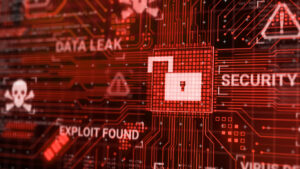A variety of moving processes in the sphere of cyber security protects your company’s data. This approach relies heavily on endpoint detection response (EDR) and extended dynamic range (XDR). Despite the fact that both of these procedures play essential roles in supplying you and your entire company with peace of mind, they are different. These projects, which have various purposes, attempt to prevent dangers from causing long-term damage.
By delivering openness and transparency, user behavior data analysis, and applied threat intelligence, NetWitness puts its clients and analysts ahead of their competition when it comes to cyber dangers. Such innovative security technologies are designed to give you a way to guarantee that your business, regardless of size, is safe on all fronts. Continue reading, and then contact one of NetWitness’ consultants to determine which of their two solutions is best for you and your business.
Endpoint Detection and Response (EDR)
Laptop, desktop, and server risks are recognized and handled. By continuously monitoring occurrences that include user activity and process activity, EDR systems can help alert you of potentially risky actions. They also make it easy to choose automatic responses and identify possible threats. This not only expedites the process of repairing any security holes but also enables enterprises to be more proactive in their capacity to respond swiftly and effectively to hostile assaults.
EDR solutions are ideal for safeguarding large companies with several locations or a range of devices since they are compatible with all networks and device types. By safeguarding endpoint devices from the beginning until the end, EDR solutions prevent malware and other hazardous activity from entering an environment. This type of defense is known as end-to-end defense.
Extended Dynamic Range (XDR)
XDR identifies and responds to attacks on mobile devices. Every modern business or organization will need XDR’s enhanced security against harmful attackers. It uses advanced analytics to identify and terminate questionable behavior quickly, therefore averting any harm. XDR’s risk-scoring technique assesses the potential danger posed by each incoming event to assist businesses in prioritizing their defenses and responding to all attacks in the most effective way.
By partnering with other security solutions, XDR can also provide a unified view of threats across a wide range of devices and networks. This makes recognizing unusual trends of behavior and acting swiftly much easier. Business owners no longer have to be concerned about the security and protection of their data, thanks to XDR. XDR is an indispensable tool for any firm worried about the security of its critical data and systems.
The Difference Between Security Systems
To begin, EDR is used on devices, whereas XDR monitors network activity. EDR and XDR are two security technologies that, when coupled, provide more awareness and protection against assaults. The fundamental goal of endpoint detection and response, or EDR, is to monitor for potentially risky behaviors on multiple endpoints. It provides full risk information to businesses, allowing them to detect and react to attacks quickly before they do substantial damage.
Extended detection and response is a more comprehensive way to detect harmful behavior in network traffic that collects data from several sources scattered across the network. XDR adds an extra layer of security to a system by increasing users’ perception of possibly risky network activity that might otherwise go undetected. Businesses that mix EDR and XDR solutions may benefit from enhanced security and incident response capabilities. This is really helpful in an emergency.
While XDR is used as just one system, EDR is part of a larger security strategy. With the use of EDR, malicious acts on business networks or devices may be identified, analyzed, and remedied. This is accomplished by gathering data from endpoint devices like logs, process activity, and network traffic, which is then analyzed for aberrant behavior that may suggest an impending attack. When potentially dangerous acts are recognized, EDR systems can alert administrators while also providing tools for further investigation and reaction capabilities.
Additional data sources from higher layers of the environment, such as cloud workloads, servers, applications, and networks, are integrated into XDR. As a result, it is a more comprehensive strategy than EDR, which only aggregates data from one layer of the setting. As a result, endpoint-focused security solutions may ignore risks that XDR systems can detect.
Because XDR systems may provide a broader context across the environment, organizations can quickly assess the scope and severity of more complex threats in real-time. XDR systems are commonly employed as a stand-alone security measure, but they can also be combined with existing EDR solutions to provide even more comprehensive threat detection and response capabilities.
EDR Is Frequently More Expensive
Larger companies commonly use EDR solutions because they frequently give a wider range of features than XDR solutions. Because they have complete data security and detection capabilities, these devices are frequently more expensive. Due to the network’s ability to detect aberrant behavior, EDR systems can aid in spotting dangerous attacks in real time and preventing them from causing harm to the system. They may also conduct extensive forensic investigations into earlier security breaches, enabling businesses to better understand how their networks’ security was penetrated and adopt changes better to defend themselves against similar attacks in the future.
Finally, EDR solutions let enterprises maintain a strong security posture while retaining comfort and efficiency. Despite the fact that EDR systems are more costly, many businesses choose them due to the extra value that their sophisticated capabilities give.
Choose NetWitness for Security Consulting
NetWitness has you covered regardless of the service or application you require. Whether your company uses XDR, EDR, or both, NetWitness can supply not just the software but also the maintenance and support required to keep the product functioning and fix any difficulties that may emerge.
Take a look at the NetWitness website to read more about the options available to you and your company. They offer technical and cloud support in addition to the aforementioned services. You may also use any of their SIEM, NDR, or SOAR solutions. They are a cybersecurity industry leader with over 25 years of expertise. Whatever level of security you want, NetWitness will deliver excellent results.






